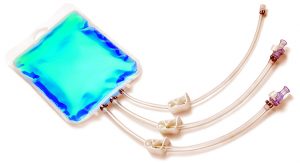 In BPI’s “Ask the Expert” webcast on 4 October 2017, Mike Johnson (market development manager at Entegris Life Sciences) discussed single-use bags and gas permeation.
In BPI’s “Ask the Expert” webcast on 4 October 2017, Mike Johnson (market development manager at Entegris Life Sciences) discussed single-use bags and gas permeation.
Johnson’s Presentation
Permeation rates are a function of fluid properties, the type of material being penetrated, and application temperature. Standardized test methods used to determine permeability characteristics include ASTM D1434 and ASTM D3985. A fixture in Entegris’s test apparatus holds a sample plaque that is flanked upstream by high-pressure gas and downstream by a sensor that measures breakthrough time and the rate of permeation through the material.
In most single-use bags, an ethylene vinyl alcohol (EVOH) layer provides a gas-permeation barrier. The outer layer is ethylene vinyl acetate (EVA), polyethylene, or another polymer. That combination of layers raises the risk of detrimental extractables because of adhesives that bond them together. Such constructions are susceptible to delamination and film failure because of differences in thermal expansion and challenges of bonding different polymers together. Film advances have provided single-layer, gamma-stable, fluoropolymers to reduce those risks. But what about permeation?
Johnson showed the permeation rates of several materials: EVOH, perfluoroalkoxy alkane (PFA), EVA, and silicone, in order of lowest to highest permeation rates for O2 and CO2. He pointed out that users want product stability. They need to know how well a bag maintains a solution’s pH and concentration — and how the materials of construction affect those.
Next he presented stability data for a 5-mM Na2HPO4 solution frozen in two types of disposable bags stored with sublimating dry ice that gave off CO2. This test covered four different bag sets: an Aramus single-layer fluoropolymer bag, a multilayer EVA–EVOH–EVA bag, and those same two bag types placed into mylar. The bags were frozen at –85 °C and then stored in –78 °C chambers, with pH measurements taken at 0, 1, 3, 7, and 21 days. In a second phase, filled bags were placed directly into the chambers (without the freezing step) so that the solution would freeze by exposure to sublimating dry ice. And pH was measured at the same time points.
Changes in pH of the prefrozen Na2HPO4 solution were similar in bags containing an EVOH layer and those without one. Encasing the bags in mylar reduced the amount of change only slightly. Greater pH changes came with bags placed directly into the dry-ice chamber but were similar for multilayer and single-layer bags. Based on a 21-day exposure to CO2 from sublimating dry ice, no difference in gas-permeation performance was seen for frozen Na2HPO4 solutions in either type of bag.
Questions and Answers
Would you expect the same results with other fluids? Others may have a greater or lesser tendency to permeate through these bags. I would expect the results to be similar but solution-specific.
How did you choose the time points in this study? They were established by considering how long these bags might be frozen and then transported — within a facility or from one site to another. We took into account the cold-chain and shipping processes that bioprocessing fluids might undergo.
Can you add an EVOH layer to the fluoropolymer material? It would be very challenging because of different melt temperatures and the polymers’ lack of ability to adhere to one another. But I don’t see a need to add an EVOH gas barrier layer to fluoropolymer material. And if it were accomplished, the adhesives would affect the extractables profile.
How many bags did you test, and do you see any variability among them? We tested five bags per time point and took an average of the results. They were consistent from one bag to the next.
What is the cooling-time difference among different configurations? It took two hours to freeze the Na2HPO4 solution, and that wasn’t bag-dependent.
Would you expect the same results for bags exposed to the conditions of a commercial flight? You wouldn’t see a significant difference between the two products tested. But I don’t have enough information to say whether there would be a difference in the pH change overall.
What is the difference between frozen bags and those at room temperature for puncture, tear, and so on? The single layer has much better strength characteristics at cold temperatures. Fluoropolymer materials have a wide operating temperature range. Even at –85 °C, there’s very little change in the material properties. In a multilayer bag, the material can get brittle and potentially fracture, with a much higher risk at cold temperatures than that of a single-layer bag.
More Online
Access Michael Johnson’s full webcast on the BPI website at www.bioprocessintl.com/ask-the-experts/single-use-bag-permeability-testing-cryopreservation-conditions.
